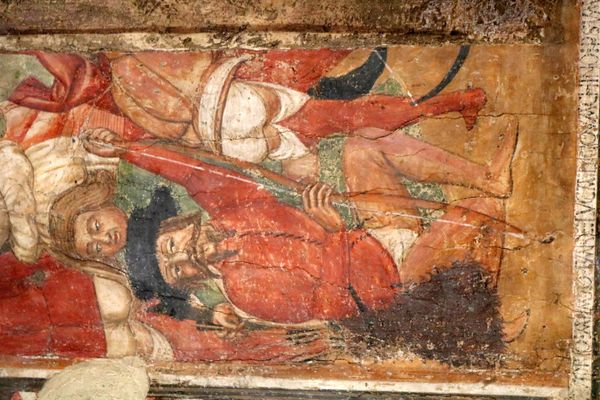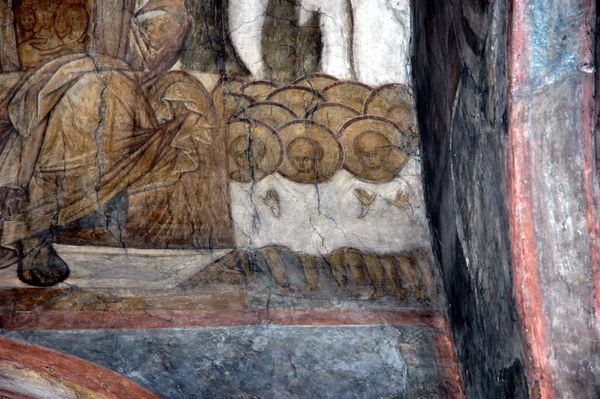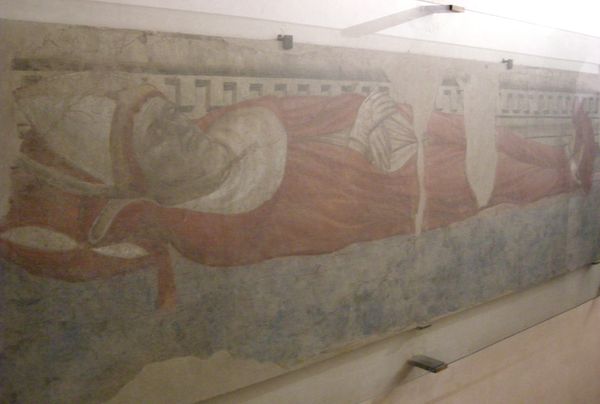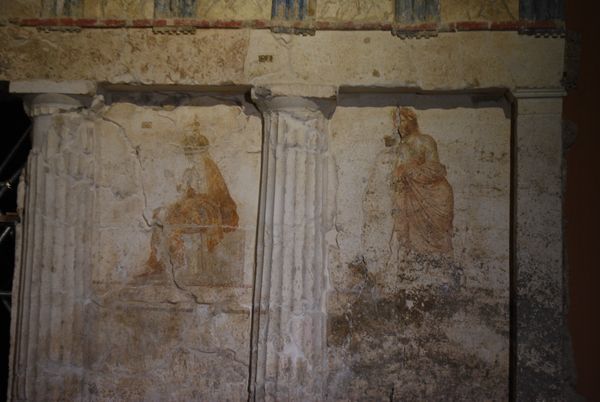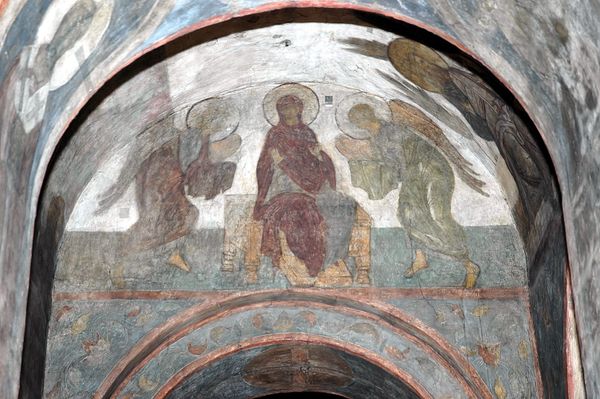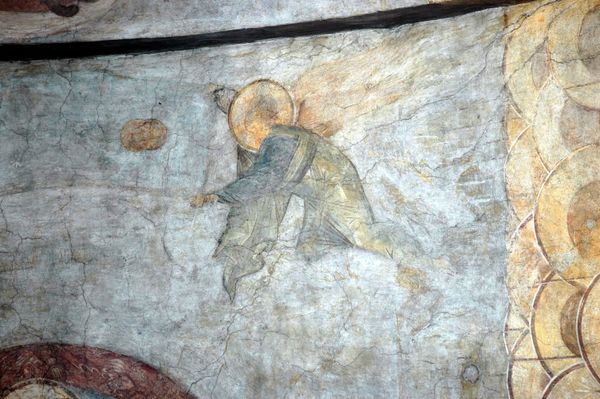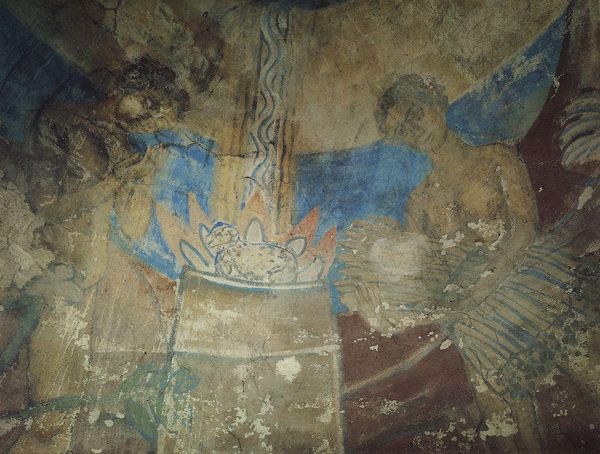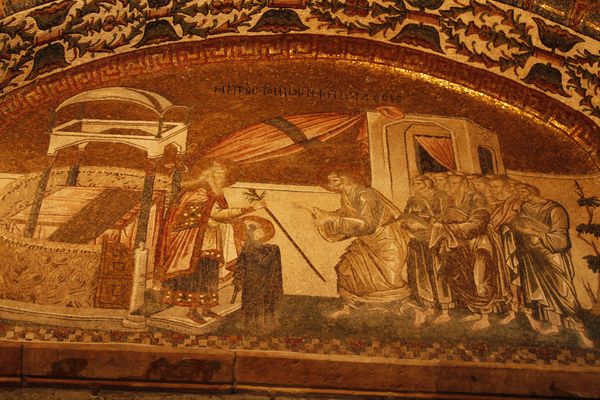
fresco
#
medieval
#
narrative-art
#
figuration
#
fresco
#
history-painting
#
italian-renaissance
Copyright: Public domain
Curator: We’re looking at a fresco attributed to Lo Scheggia from 1457, located in the Church of San Lorenzo, in San Giovanni Valdarno, Tuscany. Editor: My first thought is, “violent slumber.” There’s a disquieting combination of repose and struggle in this cluster of figures. Curator: Well, considering it's a history painting from the Italian Renaissance, it’s highly possible that’s no slumber at all, but violent action! And being a fresco, it involved a particular method of production tied to its location. Think about the labor involved in preparing the wall, mixing the pigments, and rapidly applying them before the plaster dried. Each color choice had a material consequence in terms of effort and cost. Editor: Absolutely. The medium undeniably shapes the message, but beyond that, I find myself focusing on the colors chosen and what they evoke. The intense reds, offset by the stark whites, hint at sacrifice, blood, passion… perhaps martyrdom? Curator: That bold use of red speaks to the available pigments in that period and the artist’s choice in showcasing them despite costs and difficulties. Editor: Agreed. Let's think about how those intense pigments played in Lo Scheggia’s broader symbolic toolkit and the continuity of their use across other artworks and moments in history. They weren’t simply chosen for their visual impact at that time alone. The historical reverberations are vital to consider. Curator: Precisely! But it's equally critical to view this piece as a material object tied to the economy of art production at the time. Who commissioned it, and what labor went into this cultural artefact that remains in a rural Italian church? Editor: Seeing both perspectives offers, to me, a complete appreciation for a cultural symbol which resonates with complex implications.
Comments
No comments
Be the first to comment and join the conversation on the ultimate creative platform.
